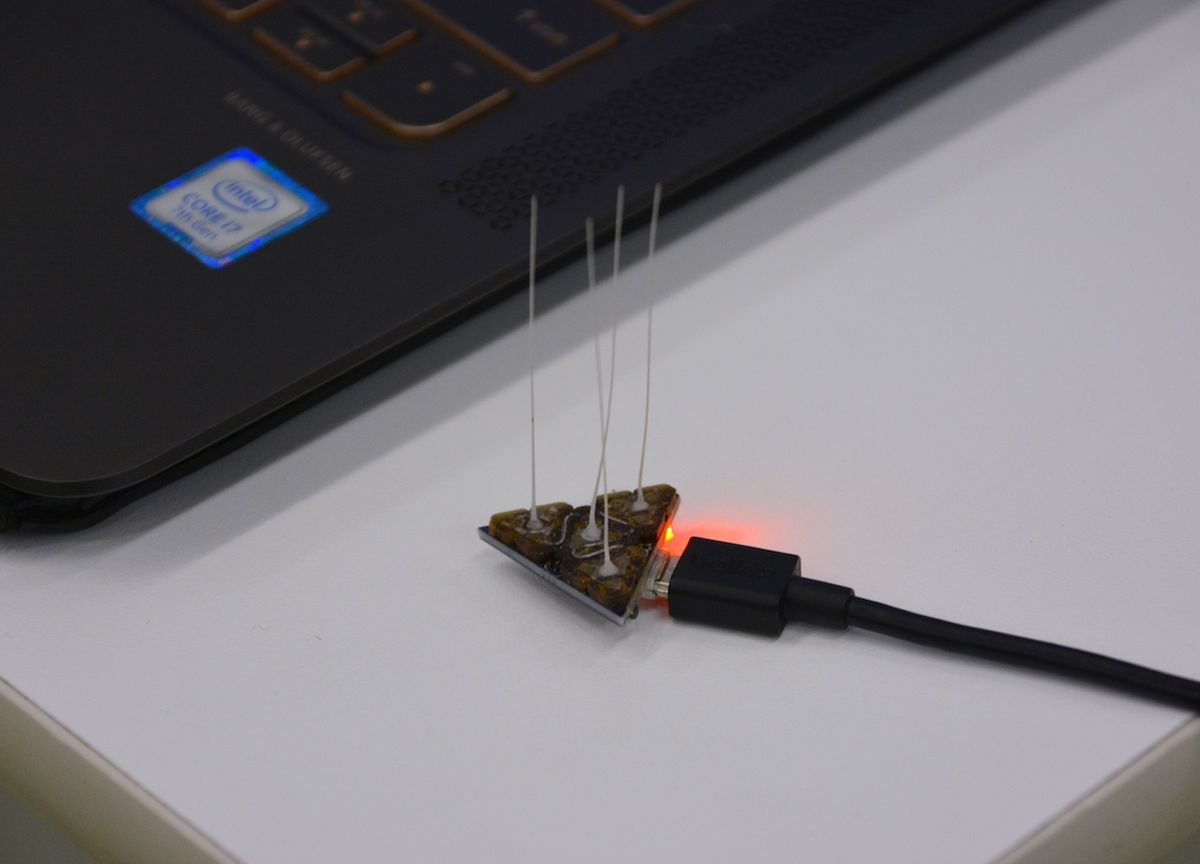Animals of all shapes and sizes have whiskers of some sort. Cats and dogs and rodents have them. Seals have them too. Some birds have them, as do insects and fish. Whiskers have shown up across such a diversity of animals because they’re an efficient and effective method of short range sensing. Besides just being able to detect objects that they come into direct contact with, whiskers can also sense fluid flows (like the speed and direction of moving air or water), and they work even if it’s dark or foggy or smoky.
While we’ve seen some research on whiskers before—I’m sure you remember the utterly adorable ShrewBot—there hasn’t been too much emphasis on adding whiskers to robots, likely because lidar and cameras offer more useful data at longer ranges. And that’s totally fine, if you can afford the lidar or the computing necessary to make adequate use of cameras. For very small, very cheap drones, investing in sophisticated sensing and computing may not make sense, especially if you’re only interested in simple behaviors like not crashing into stuff.
At ICRA last month, Pauline Pounds from the University of Queensland in Brisbane, Australia, demonstrated a new whisker sensing system for drones. The whiskers are tiny, cheap, and sensitive enough to detect air pressure from objects even before they make physical contact.
Here’s how the researchers describe the system:
We are interested in translating the proven sensor utility of whiskers on ground platforms to hovering robots and drones— whiskers that can sense low-force contact with the environment such that the robot can maneuver to avoid more dangerous, high-force interactions. We are motivated by the task of navigating through dark, dusty, smoky, cramped spaces, or gusty, turbulent environments with micro-scale aircraft that cannot mount heavier sensors such as lidars.
The whisker fibers themselves are easy to fabricate—they’re just blobs of ABS plastic that are heated up and then drawn out into long thin fibers like taffy. The length and thickness of the whiskers can be modulated by adjusting the temperature and draw speed. The ABS blob at the base of each whisker is glued to a 3D-printed load plate, which is in turn attached to a triangular arrangement of force pads (actually encapsulated MEMS barometers). The force pads can be fabricated in bulk, so it’s straightforward to make a whole bunch of whiskers at once through a process that’s easy to automate. The materials cost of a four-whisker array is about US $20, and the weight is just over 1.5 grams.
As you can see in the video, the whisker array is surprisingly sensitive: It can detect forces as low as 3.33 micronewtons, meaning that the researchers had to be careful not to stand too close to the whiskers while making measurements since the force of their breathing would throw things off. This sensitivity allows the whiskers to detect the wave of air generated by objects moving towards them, perhaps not in time for the drone to actually stop, but certainly in time for it to take other steps to protect itself, like cutting power to its motors. The whiskers can also be used to measure fluid flow (a proxy for velocity through the air), and of course, at slow speeds they work as contact sensors.
While the focus of this research has been on whiskers for microdrone applications, it seems like these could be fantastic sensors for a wide variety of robots, and especially for cheap robots. Any small robots that operate in environments that are dark, dusty, or smoky could leverage these sensors to keep from running into things where far more expensive cameras and lidar systems would struggle. But for now, the University of Queensland researchers are focused on aerial applications, with the next steps being to mount whisker arrays on real drones to see how they perform.
“Light-Weight Whiskers for Contact, Pre-Contact and Fluid Velocity Sensing,” by William Deer and Pauline E. I. Pounds from the University of Queensland, Brisbane, Australia, was presented at ICRA 2019.
Evan Ackerman is a senior editor at IEEE Spectrum. Since 2007, he has written over 6,000 articles on robotics and technology. He has a degree in Martian geology and is excellent at playing bagpipes.



